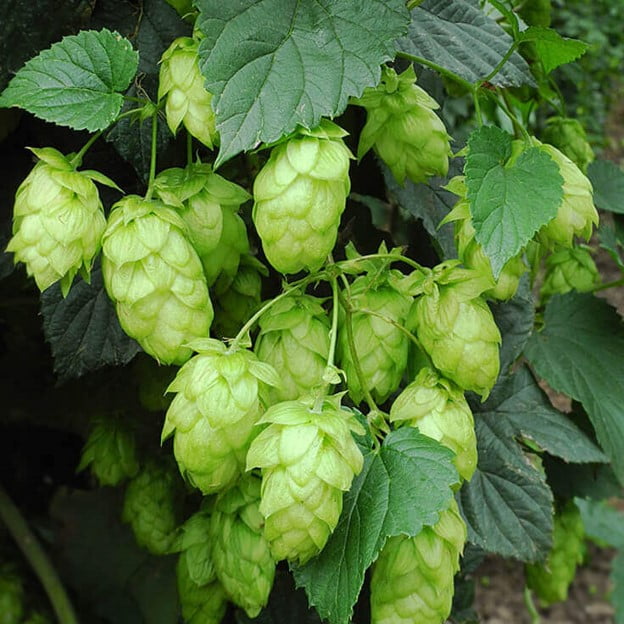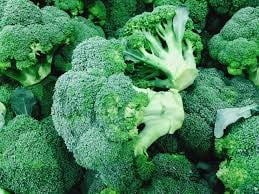Hops May Improve Heart Health*
In a study on 23 people (DB-RCT), the intake of hops isohumulones improved blood flow, both in smokers and non-smokers [50].
In two studies in mice, xanthohumol prevented and reversed the buildup of triglyceride and cholesterol plaques inside the arteries [51, 52].
In rats, hops extract relaxed blood vessels, which may reduce the risk of heart disease [53].
After injuries, vessels can be narrowed from blood vessel cell growth and lead to heart disease. Xanthohumol was able to mitigate these effects [54, 55].
Because xanthohumol inhibits platelet activity, it may reduce the risk of blood clot formation (thrombosis) [56].
Hops Help Blood Sugar Balance*
In a study of 20 diabetic people (DB-RCT), the intake of hops isohumulones reduced blood sugar levels [57].
In multiple studies with mice and rats, the intake of hops extract, its components xanthohumol and isohumulones, or a mixture of hops isohumulones and acacia proanthocyanidins reduced blood sugar levels and insulin resistance [31, 32, 33, 57, 58, 35].
Hops Have Anticancer Activity (cells)*
The hops component xanthohumol reduced cell growth, survival, or migration in the following human cancer cell types:
- Prostate [78, 79, 80, 81]
- Liver [82, 83, 84]
- Pancreatic [85]
- Stomach [86]
- Colon [87, 88]
- Breast [89, 90, 91]
- Ovarian [89, 88]
- Cervix [92, 93]
- Lung [94, 92, 88]
- Brain [95]
- Skin [88]
- Laryngeal [96]
- Thyroid [97]
- Leukemia [98, 99]
Hops May Possibly Help with Neurodegenerative Diseases (animals)*
Hops extract reduced brain damage and maintained brain function in rats with stroke or poisoned with aluminum nitrate. The long-term intake of hops extract reduced the buildup of a protein believed to cause Alzheimer’s disease (β-amyloid) in the brain of old mice and preserved their cognitive functions [105, 106, 107].
Xanthohumol protected brain cells against inflammation and oxidative damage, suggesting its therapeutic potential in neurodegenerative diseases [108, 109].
Because xanthohumol (among other flavonoids) can block an enzyme involved in the onset of Alzheimer’s disease (BACE1), it was suggested as a preventive therapeutic candidate for this disease [110].
Hops May Prevent Liver Damage (animals)*
In several mice studies, hops or its components xanthohumol and isohumulones had protective effects against the following liver disorders:
- Alcoholic fatty liver disease [115, 116]
- Non-alcoholic fatty liver disease [117, 118]
- Oxidative damage, inflammation, and cell death associated with aging [119]
- Tissue scarring in response to liver damage [117]
- Xanthohumol, humulones, and lupulones prevented the inflammatory process in liver cells and the activation process of those causing tissue scarring in response to liver damage [117, 118, 120].
Hops and Digestive Function (animals)*
- In rats, hops intake increased stomach juice production without changing its acid level. In another study, intake of hops extract reduced thin bowel movements [121, 122].
- In a study in pigs, the supplementation of the diet with hops (or a grape product also rich in polyphenols) increased weight gain per feed intake. The new diet did not change gut morphology or feed digestibility, but changed the gut microbial composition and reduced the production of pro-inflammatory proteins [123].
Hops and Thyroid Function*
- In a study in thyroid-derived cells, xanthohumol improved iodide uptake, which is an essential step in the production of the thyroid hormone. In another study, xanthohumol increased TSH and activity of the enzyme that converts T4 to T3 (type 1 deiodinase) [124, 125].
- However, the dosages in these studies were much higher than what humans would take.
Pain and Inflammation*
- A combination of hops isohumulones, rosemary extract, and oleanolic acid reduced the pain caused by arthritis and fibromyalgia in a pilot study on 54 people [126].
Potential Anticancer Mechanisms
Based on mechanistic studies, Hops extract and one of its main compounds xanthohumol may reduce cancer risk by preventing cancer-causing substances from damaging DNA [143, 144, 145].
Xanthohumol also kills cancer cells by blocking proteins that promote cell survival, such as:
Other mechanisms by which xanthohumol causes cancer cell death include:
- Increased superoxide production [148]
- Activation of unfolded protein response [149]
- Reduced nitric oxide production [150]
- Reduced production of cytokines (MCP-1 and TNFα ) [151]
- Activation of programmed cell death [152, 153, 154] and cancer cell autophagy [155]
- Increased production of proteins that block cell growth and division (p21 and p53) [156]
Xanthohumol also prevents the formation of new blood vessels in tumors by blocking growth pathways (NF-κB and Akt) [157].
Xanthohumol may reduce the production of proteins that promote resistance to radiation and chemotherapy (EGFR, STAT3, and MDR1) [158, 159].
Finally, xanthohumol reduces the ability of cancer cells to invade other tissues by:
- Blocking prostaglandin production [160]
- Reducing the production of a protein that allows cancer cells to migrate outside the tumor (MMP-9) [146]
- Stimulating an anti-invasive protein complex (E-cadherin/catenin) [90]
- Reducing the production of chemokine receptors (CXCR4) [161] and cell attachment proteins (ICAM-1) [162]
These anticancer effects have been studied in cells and animals at high dosages, but often this doesn’t translate to benefits in humans, especially at normal dosages.
Antioxidant Mechanisms*
Reactive oxygen species are formed through chemical reactions in the body and cause oxidative damage to DNA, proteins, and fatty molecules. Plant flavonoids prevent the oxidative damage of reactive oxygen species by [163, 164]:
- Breaking them down
- Blocking the enzymes that produce them
- Retaining the minerals required for their production
Xanthohumol and other hops flavonoids activate the following antioxidant proteins:
Hops compounds, especially xanthohumol, have proven antioxidant effects in the liver, brain, heart, kidneys, lungs, and blood vessels [168, 169, 50, 170].
Other hops flavonoids, especially myricetin, have antioxidant effects in white blood cells(lymphocytes) [171].
Anti-Inflammatory Mechanisms*
Both hops extract and xanthohumol have several proven anti-inflammatory effects, including:
- Reducing T cell growth and killer T cell development [172]
- Blocking pro-inflammatory proteins (TLR4, NF-κB, CREB, COX1, and COX2) [173, 174, 175, 176]
- Decreasing cytokine (IL-2, IL-6, IL-12, IFN-γ, MCP-1, and TNF-α) and antibody (IgE) production [172, 151, 173, 112, 111]
- Reducing histamine release [177]
- Blocking nitric oxide production [150]
Fat/Cholesterol-Lowering Mechanisms*
Xanthohumol blocks a key enzyme in triglyceride production (diacylglycerol acyltransferase) and the protein that binds newly formed triglycerides to lipoproteins (MTP). This results in a decreased release of the lipoprotein that transports triglycerides through blood (apolipoprotein B) [178, 179, 180, 181].
Xanthohumol also reduces cholesterol buildup inside the arteries by preventing damage to LDL and blocking the protein that transports this fatty molecule from HDL to LDL (cholesteryl ester transfer protein) [182, 183, 184].
Xanthohumol reduces the development and stimulates the death of fatty cells by reducing PPAR-gamma levels in fat cells, which lowers total body fat accumulation. In turn, isohumulones reduce blood triglyceride levels by activating PPARα. In the liver, xanthohumol prevents triglyceride buildup by binding to the farnesoid X receptor (FXR), which decreases the levels of an enzyme that promotes fat production and fatty cell development (SRBEP1c) [37, 57, 60, 185].
Sugar-Lowering Mechanisms*
The simultaneous activation of PPAR-alpha and PPAR-gamma by isohumulones lowers blood sugar levels by reducing insulin resistance. Hops bitter acids also activate the bitter taste receptors and stimulate the production of GLP-1, a protein that triggers insulin production in response to sugar [57, 59].
Xanthohumol lowers blood sugar levels by:
- Binding to the farnesoid X receptor [60, 61]
- Blocking sugar uptake [62]
- Blocking an enzyme that produces sugar from complex carbohydrates (α-glycosidase) [63]
While some hops flavonoids (e.g., quercetin) also reduce sugar uptake, others (e.g., catechin) increase it. The hops flavonoids catechin, epicatechin, quercetin, and rutin also lower blood sugar levels by stimulating the growth of the cells that produce insulin (β-cells) [62, 64+].
FDA Compliance
*The information on this website has not been evaluated by the Food & Drug Administration or any other medical body. We do not aim to diagnose, treat, cure or prevent any illness or disease. Information is shared for educational purposes only. You must consult your doctor before acting on any content on this website, especially if you are pregnant, nursing, taking medication, or have a medical condition.











Reviews (0)
There are no reviews yet.